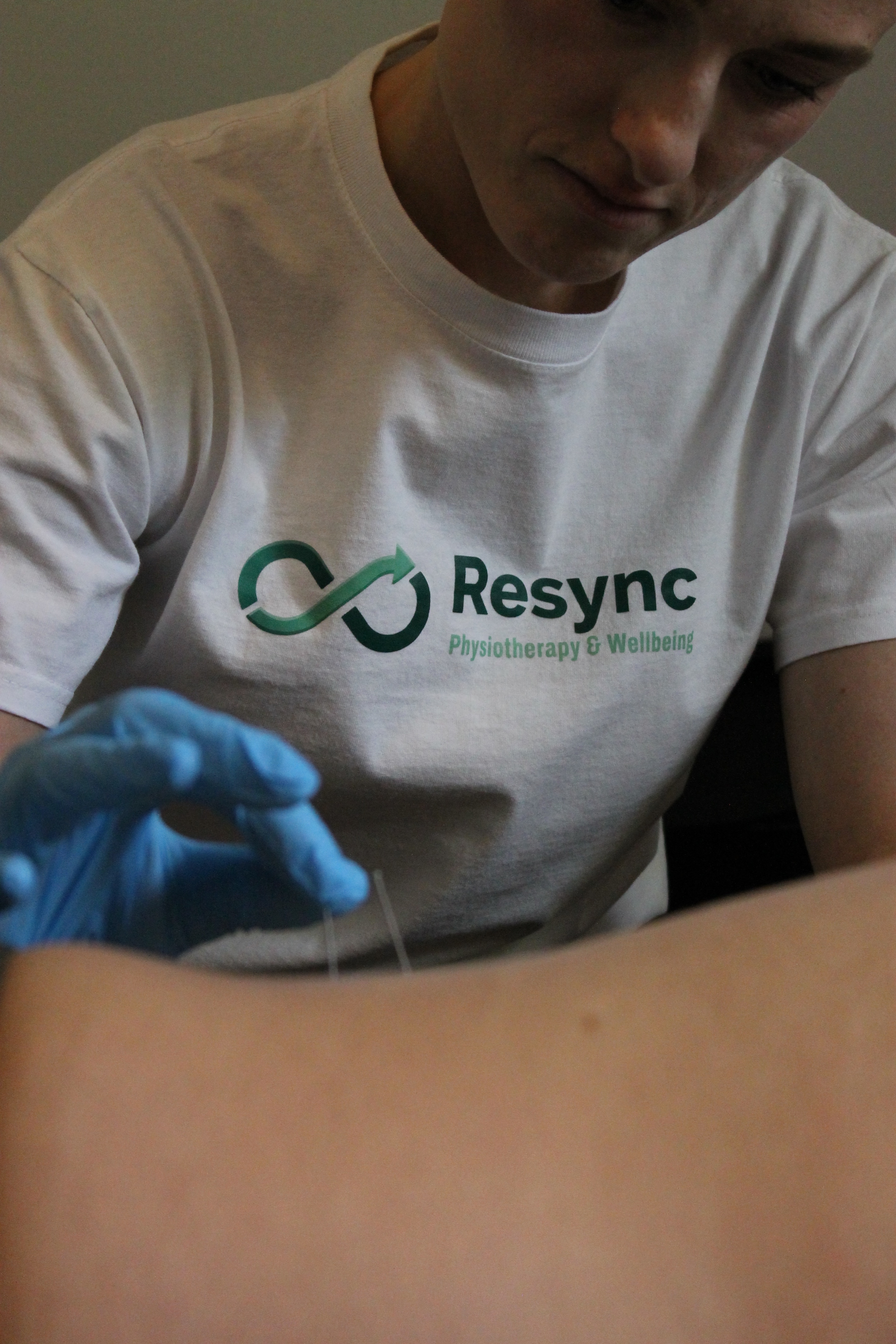Why Does My Back Hurt And How Do I Fix It?
Back pain is something almost everyone experiences at some point — whether it’s a dull ache after sitting too long, a sharp twinge from lifting, or a more persistent pain that just won’t shift. It’s frustrating, it can get in the way of life, and it often feels like a mystery.
At Resync, we believe the answer isn’t just about quick fixes — it’s about understanding what’s really going on and building a clear path forward. That’s why we’ve developed The Resync Method, a staged approach that doesn’t just reduce pain, but helps you rebuild strength, confidence, and resilience so you can get back to living fully.
Why Does Back Pain Happen?
Back pain is rarely caused by just one thing. Here are some common contributors:
- Non-specific low back pain - the most frequent type, where no clear structural cause is found.
- Disc irritation / bulge / degeneration - discs between vertebrae may press on nerves or lose height.
- Muscle or ligament strain - overuse, lifting, sudden movement, or poor posture can stretch soft tissues.
- Joint (facet / sacroiliac) dysfunction - pain from the small joints in the spine or pelvis.
- Nerve root irritation / sciatica - when a nerve in the lower back is compressed, producing pain, numbness, or tingling in the leg.
- Lifestyle and contributing factors - weak muscles, reduced physical activity, stress, poor sleep, weight, and posture all play a role.
Note: A small number of cases involve “red flags” — signs that suggest a more serious condition (such as infection, fracture, or nerve damage). If you have symptoms like uncontrolled weight loss, fever, numbness in both legs or around the genitals, or loss of bladder/bowel control, seek urgent medical attention.
What Helps: Evidence-Backed Strategies
When you’re living with back pain, it’s natural to look for a quick fix. The reality is, no single treatment works for everyone. The best results usually come from a combination of strategies that focus on movement, lifestyle, and professional guidance. Let’s break down what the evidence tells us:
Stay Active and Keep Moving
One of the most important things you can do for back pain is to keep moving. Long periods of rest or lying down often make pain worse, because muscles stiffen and joints lose mobility. Gentle activities such as walking, swimming, or light stretching help improve circulation, keep tissues healthy, and support recovery. Research consistently shows that people who stay active recover faster than those who avoid movement.
Exercise and Strengthening
Specific exercise programmes — often led by a physiotherapist — can play a key role in managing back pain. These may include core strengthening, flexibility exercises, or functional training tailored to your needs. Stronger muscles support the spine, improve posture, and reduce the strain on irritated tissues. Over time, exercise doesn’t just help pain settle, it also lowers the risk of flare-ups in the future.
Hands-On Treatment
Manual therapy, such as joint mobilisation or soft tissue techniques, can provide relief in the short term. While hands-on treatment is rarely the full solution on its own, it can reduce muscle tension, improve mobility, and make it easier for you to move comfortably. At Resync, we often use manual therapy alongside exercise so you benefit from both immediate relief and long-term change.
Acupuncture and Complementary Approaches
Acupuncture has been shown to help some people manage back pain, particularly when it becomes persistent. It works by stimulating the body’s natural healing response, reducing pain signals, and easing muscle tightness. When combined with physiotherapy, it can be an effective way to support recovery and improve overall wellbeing.
Looking at Stress and Lifestyle Factors
Back pain isn’t only about muscles and joints — stress, poor sleep, low activity levels, and even mood can all play a role. If you’ve ever noticed your back pain flare up during a stressful time, you’re not alone. Evidence shows that addressing these “psychosocial” factors is just as important as physical treatment. Learning how to manage stress, improving sleep quality, and pacing activities can make a huge difference.
Medication (Short-Term Use Only)
Pain relief medication, such as anti-inflammatory drugs, can sometimes help you get through the acute phase of back pain. However, medication should be used carefully and usually only for the short term. It doesn’t address the underlying cause, so it works best when combined with exercise and other active treatments.
It’s important to emphasise: no single treatment is “magic”. The best results come from combining movement, professional guidance, and gradual rehab. Also, a recent large review found that only a small proportion of non-surgical treatments yield clear benefits, reinforcing the need for personalised care.
How Long Does Recovery Take?
- Many people improve in 6–8 weeks with the right approach.
- Some back pain becomes persistent (chronic) — lasting more than 12 weeks - and requires a comprehensive and sustained plan.
- Recurrence is common: studies suggest about 1 in 3 people may have another episode within a year.
How The Resync Method Support Healing
At Resync, we believe in active recovery, clarity, and progression. Here’s how we often structure the journey back to a healthier back:
- Comprehensive assessment — understand history, movement, strength, and contributing factors.
- Education & movement plan — clear steps you can follow early on.
- Hands-on and adjunct therapies — manual work, acupuncture, etc., when indicated.
- Progressive rehabilitation — building strength, flexibility, and resilience.
- Prevention & maintenance — strategies to keep pain from returning.
wWe consider the whole person — physically, psychologically, and in lifestyle — when designing treatment.




